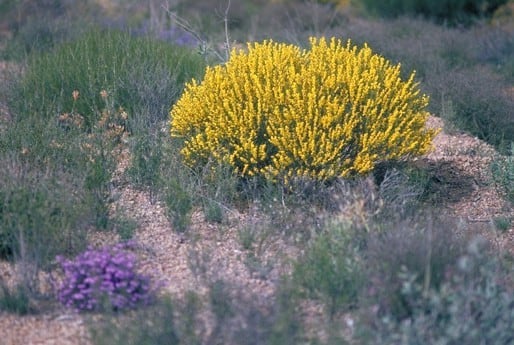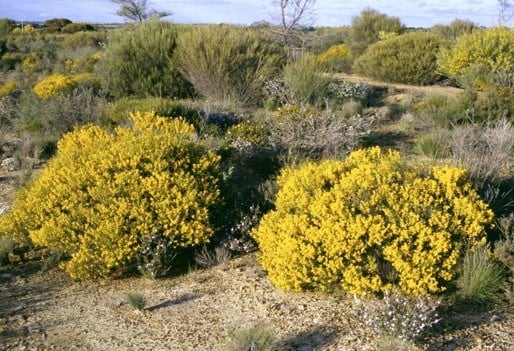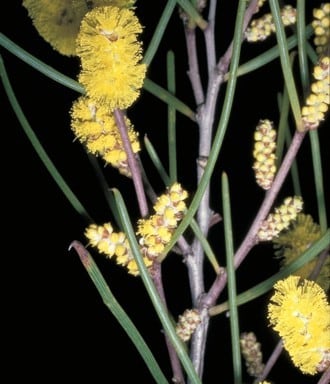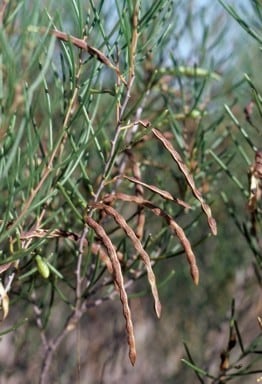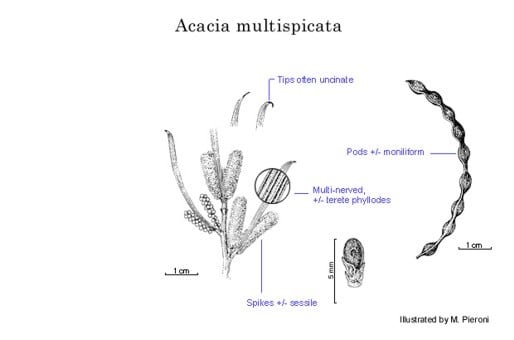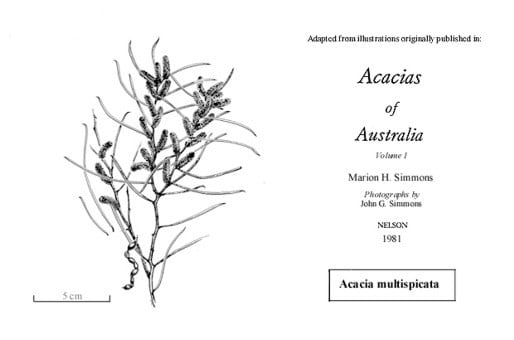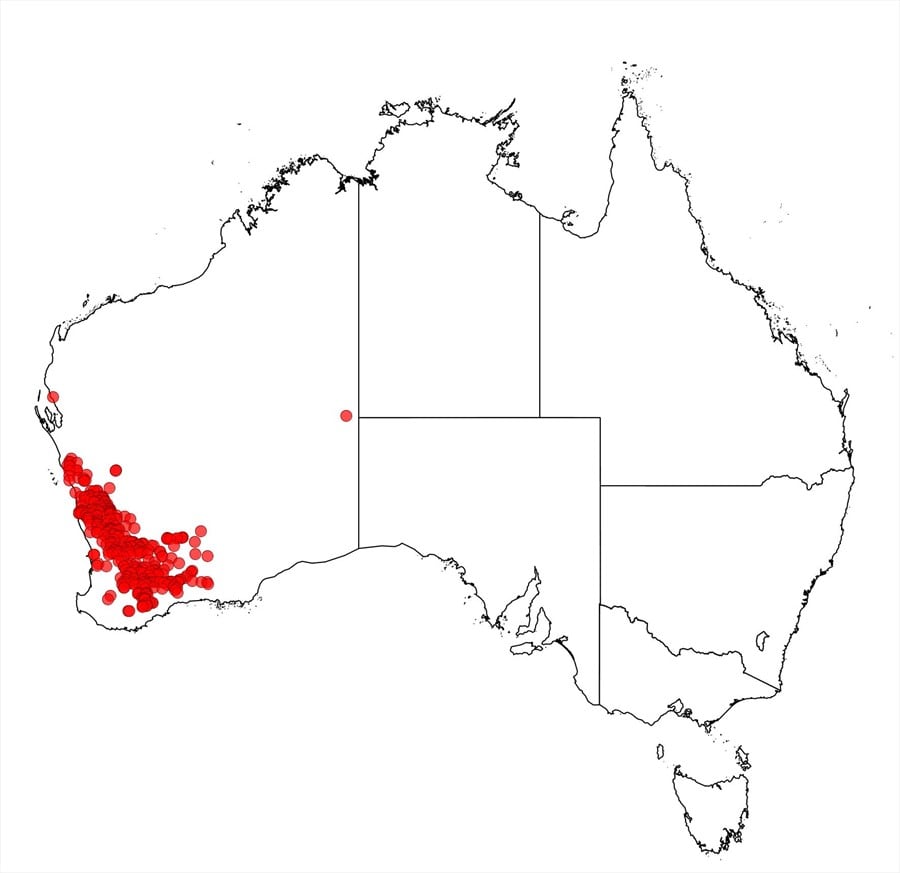Acacia multispicata Benth.
WATTLE
Acacias of Australia
Family
Fabaceae
Distribution
Widespread from Ajana (c. 60 km ESE of Kalbarri) S to Cranbrook and E to near Queen Victoria Rock (which is c. 45 km SSW of Coolgardie) and Frank Hann Natl Park area (located 30–110 km ENE of Lake King), south-western W.A. The specimen I.Olsen 584 (PERTH) said to have been collected from 40 km S of Carnarvon (c. 300 km N of Ajana) is possibly incorrectly labelled.
Description
Shrub mostly 0.4–2.5 m high, rather dense, spreading, commonly rounded, multistemmed. Branchlets glabrous or sparingly appressed-puberulous, sometimes tomentulose in phyllode axils. New shoots white to grey, sometimes with golden tips. Phyllodes terete to compressed, occasionally flat and linear, straight to slightly curved, (1–) 2–7 (–10) cm long, 0.8–1.5 mm wide, with an acute to acuminate and commonly uncinate apex, ±rigid, glabrous, with 8–20 fine nerves in all, 3- to many-nerved per face when flat. Inflorescences simple, 1 or 2 per axil; peduncles 0–2 mm long, glabrous to puberulous; receptacle puberulous; heads loosely obloid to cylindrical, 8–15 mm long, golden; bracteoles shortly stipitate, broadly fan-shaped. Flowers 4-merous; sepals 1/2–3/4-united; ovary hairy. Pods linear, strongly raised over and constricted between seeds, to 8 cm long, 3–4 mm wide, thin-crustaceous, glabrous. Seeds longitudinal, elliptic, 3–4 mm long, dull to subnitid, smooth, pitted and/or verruculose, black; aril apical.
Habitat
Grows mostly on sand plains in heath, scrub and shrubland.
Specimens
W.A.: 6 km S of Kalbarri turn-off on North West Coastal Hwy, R.S.Cowan A830 & R.A.Cowan (CANB, K, MEL, NY, PERTH, US); Cranbrook, L.Diels 4415 (PERTH); 12 km S of Wickepin towards Harrismith, B.R.Maslin 4796 (CANB, K, MEL, NSW, PERTH); 15 km SSW of Queen Victoria Rock, K.Newbey 5683 (PERTH).
Notes
Acacia multispicata along with A. sessilispica and A. singula comprise the ‘Acacia multispicata group’, fide R.S.Cowan & B.R.Maslin, Nuytsia 10: 44 (1995). Acacia sp. Manmanning (B.R.Maslin 7711) is also a member of this group and A. jibberdingensis is related to it.
A perplexingly variable species: the treatment adopted here is a conservative one. Field study throughout its extensive range is needed to help elucidate the patterns of variation, fide R.S.Cowan & B.R.Maslin, Nuytsia 10: 44 (1995). A measure of the variation within individual populations and the collection of more fruiting material would be especially helpful for arriving at the best taxonomy for the species.
FOA Reference
Data derived from Flora of Australia Volumes 11A (2001), 11B (2001) and 12 (1998), products of ABRS, ©Commonwealth of Australia
Author
R.S.Cowan, B.R.Maslin
Minor edits by B.R.Maslin
This identification key and fact sheets are available as a mobile application:
URL: https://apps.lucidcentral.org/wattle/
© Copyright 2018. All rights reserved.
